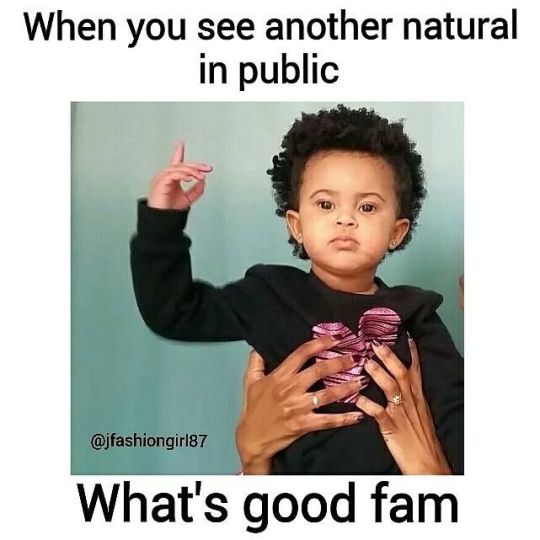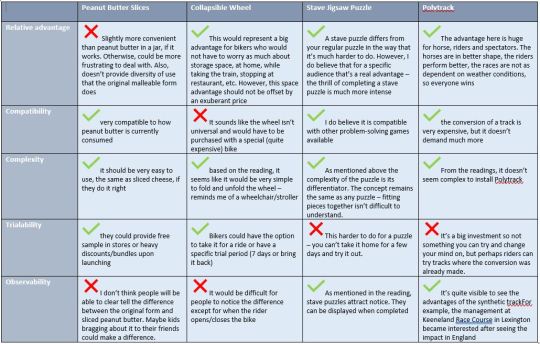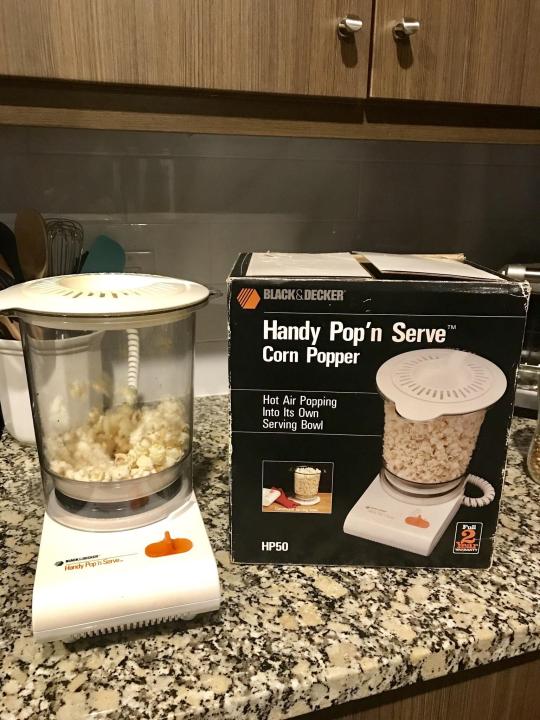Don't wanna be here? Send us removal request.
Photo

Natural Hair, Down For The Culture?
When reading the case on Fair & Lovely products, I found myself wondering how different (or rather similar) the case was for relaxers and other products used to change one’s hair texture, especially in the Black and Latino communities. I first had my hair relaxed at the age of 13, and I’ve been doing it ever since. Even though one argument is that it makes it much easier to deal with my hair, I do admit that a big part of it is also to the need to meet society’s expectations. I would always get my hair straightened for an interview, the first day on a job or any big event. I considered it to be more professional or more acceptable. But just as the Indian actors in the case, I was (and I guess still am) simply conforming to Eurocentric beauty standards - fairer skin and long straight hair.

Over the last decade however, the natural hair movement has made incredible strides to reminds us that we are beautiful as we are. I remember when I was in college, I probably had a couple of friends rocking their natural curls. Still, most of us thought they were taking a risks. Now, I am one of the few who still gets my hair straightened (although I’ve drastically reduced how often I do it). Now, when I walk down the hair care aisle, I see products from SheaMoisture, Cantu, Blueberry Mist, and many others catering to natural hair. But it took a lot of work to get there, to instill in the head of customers that natural hair was beautiful. I think people have done a great job of linking to the message that “black is beautiful” and that we should embrace our roots and our culture. And as we know, representation matters. As kids grow up reading books that celebrate their hair, seeing celebrities they admire like Kerry Washington, Alicia Keys, Gabrielle Union, Amandla Stenberg rocking natural hair, then they feel more accepted. We have festivals such as CurlFest in NY centered around the beauty of natural hair. I even have friends who run YouTube channels on how to transition to and maintain your natural hair. Part of it is trend and fashion, but I would argue that a bigger part is education and spreading self-love.

Of course, with a movement focused on redefining beauty standards and empowering women, I think we have to be very careful not to further marginalize others. The message is about loving your hair as it grows from your scalp, but there’s been a lot of focus on how to get defined, elongated curls, which sends the wrong message to people with more coily or kinky hair. As we strive to increase representation for natural hair in books, movies, tv shows, etc. and in life, I would hope that we make sure to not concentrate solely on those who most resemble the beauty standards we are trying to get away from.
0 notes
Photo

Off to the races! Or stay home and puzzle
Judging by the 5 factors in the table below, it appears the two products most likely to be a success are the Stave puzzles and the Polytrack. However, it’s important to note that these two products cater to a very specific audience (compared to peanut butter which can be massed produced and targeted at a larger audience). The product managers for the laggers - mainly the peanut butter slices and the collapsible wheel, can use this analysis to understand which factors are slowing down the adoption of their product and tackle these issues to provide a better solution to consumers.

0 notes
Photo

Apple, Pro Nudger
In this week’s reading, “A Practitioner’s Guide to Nudging”, the authors discussed the notion of the “compromise effect”, which is a form of nudging related to pricing. Specifically, research shows that, when presented with three different product options, consumers will often pick the middle option. This reminded me of Apple’s launch of the latest iPhone, where they offered 3 different phones: the iPhone 11 priced at $699, the 11 Pro at $999 and the Pro Max at $1099. This was the first time in the history of the iPhone that the company released three versions simultaneously. I thought it was strange of Apple to offer so many choices at once and wondered how much cannibalization was expected. But I can imagine that if the costs of producing each version are relatively similar, they can nudge most people to pay for the middle option - priced only $100 lower than the highest priced item (relatively small when you’re already dropping $1k on a phone), and still manage to capture the more price-sensitive consumer with the lower option. In fact, I ended up getting the iPhone 11 Pro, even though the iPhone 11 would’ve cost me less than what I had paid for the iPhone 8.
0 notes
Photo

Warby Parker Reimagining The Customer Experience
I accidentally sat on my glasses when I was in college and broke them. This was the first time I had to change my frames in a long time. I recall how long the process felt. Besides the part where I had to get an appointment with a doctor to make sure I didn’t need an updated prescription (which ended up taking months), even the process of choosing frames was painful. I went to a LensCrafters store and tried on a few frames. Every time I tried on a pair I would send a picture to my family and friends to get their opinion - sometimes waiting 5 minutes for a text back. Even though I had narrowed the selection down to a couple favorites, I wasn’t prepared to commit. The frames and prescription lenses would cost over $400, so I wanted to feel 100% satisfied with my choice. I ended up walking out empty-handed and coming back a couple weeks later after much debate. I repeated this process both times I decided to change my frames over the years. Paying insane amounts each time, even with insurance.
This is in stark contrast to my experience with Warby Parker a few months ago. I paid less than $200 for a pair of frames I chose after trying them in the comfort of my own home. I actually did the try-at-home twice before committing. Even so, I had such a great experience shopping for frames that I’ll most likely use Warby Parker again over my traditional LensCrafters store.
I’m sure if you had asked my parents’ generation a decade ago if they would fill comfortable buying glasses online, the answer would have been no. Even I was skeptical at the beginning, and I’m the type to buy a T-shirt from an Instragram ad. However, Warby Parker was extremely successful in changing our behaviors and adapt to their model. They understood that a big part of the process was fit and therefore consumers would need to opportunity to judge the frames in more detail than simply through a screen. By giving consumers the opportunity to try 5 frames at home for a week for free, they not only removed the barrier they were facing but they also improved the experience for the consumer (allowing more days to try it on, show friends & family, etc.) while simultaneously allowing them to save money. Their try-at-home model helped accelerate their success in many ways: it of course allowed consumers to feel comfortable with a frame before making the final decision, but it also represented a big marketing strategy for them - for example, they encouraged consumers to involve their friends on social media.
The reasons for their success can be attributed to their focus on the customer, and more importantly on the customer as a human not an econ; someone who cares about peer influence, looks for shortcuts and has a bounded rationality. As they explain on their website: “ We believe that buying glasses should be easy and fun. It should leave you happy and good-looking, with money in your pocket.” As such, they’ve built everything around this goal: simple pricing model, easy shipping try-at-home process, staff pick recommendations, etc. They also use subtle nudging during and after the purchase that doesn’t disrupt the customer but is effective in grabbing their attention, as exemplified below.


0 notes
Photo

Black & Decker Multi-product Branding Problem
“. . . Black & Decker makes a good popcorn popper, and my wife just loves her Dustbuster, but I’m out here trying to make a living . . .”. This quote taken from the case exemplifies really well the problem the brand was facing at the time. Even though brand awareness was strong among customers - 98% as indicated by the case it wasn’t perceived as one of the best power tool brand in the industry. Customers associated the Black & Decker name with consumer goods or, at most, with tools for the house. They certainly didn’t think of it for serious power tools needed for jobs. I don’t think the problem stems from having the same name for all products. We’ve seen now how companies like Amazon have successfully entered many segments of the convenience industry. I believe the problem here is that the target audiences are very different while the products look very similar. Somewhere in the case, a customer mentioned not wanting to get laughed at at the site for using the black and charcoal tool. So, it doesn’t matter if the tool does the job (as their tests revealed) - it matters more what people associate the brand with. Malika’s tools are of great quality, sell for a much lower price than they do in Japan and are distinctive. Black & Decker has to agree to market to a more homogeneous audience or make more effort in distinguishing the products among the tiers. The black and charcoal color will always fair poorly to Malika’s teal and Milwaukee’s red. The introduction of a vibrant color to help them rebrand is a must in my opinion.
Picture above sourced from: https://www.reddit.com/r/BuyItForLife/comments/blys8v/1989_popn_serve_from_blackdecker_still_making_me/
1 note
·
View note